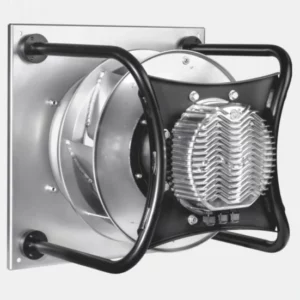In the realm of air handling and ventilation systems, plug fans have emerged as a versatile and efficient solution for various industrial, commercial, and residential applications. Their unique design and functionality make them a preferred choice in scenarios where flexibility, space-saving attributes, and customizable airflow are essential.
Unveiling the Plug Fan Design
A plug fan, also known as a direct drive fan, distinguishes itself through its compact design and integrated motor. Unlike traditional fans where the motor is connected via belts and pulleys, plug fans feature an integrated motor directly mounted within the fan assembly. This characteristic design contributes to its compactness and ease of installation.
Key Features and Advantages
1. Space-Saving Design:
- Plug fans are renowned for their space-saving design, making them ideal for applications where limited space is a concern. The absence of external motor and belt-driven components allows for a more compact footprint, enabling installation in tight spaces without compromising performance.
2. Customizable Airflow:
- These fans offer flexibility in airflow control and direction. Their design allows for customization of airflow patterns, making them suitable for various ventilation requirements, including uniform distribution of air in HVAC systems or specific airflow needs in industrial processes.
3. Energy Efficiency:
- Plug fans typically boast high energy efficiency due to their direct drive configuration. The absence of belts and pulleys reduces energy losses often associated with such components, resulting in improved efficiency and reduced maintenance costs.
4. Versatility in Applications:
- One of the significant advantages of plug fans is their versatility. They find applications in a wide range of industries, including HVAC systems, industrial ovens, drying systems, automotive manufacturing, and more.
Applications
Plug fans find extensive use across diverse industries owing to their adaptability and efficiency:
- HVAC Systems: These fans are employed in heating, ventilation, and air conditioning systems for commercial and residential buildings, ensuring proper air circulation and temperature control.
- Industrial Processes: Plug fans play a pivotal role in industrial applications like drying systems, ovens, and manufacturing processes, where controlled airflow is critical for optimal operation.
- Automotive Industry: They are utilized in automotive manufacturing for tasks like paint drying in spray booths or air circulation in vehicle assembly areas.
Plug fans have revolutionized the field of air handling and ventilation systems with their compact design, customizable airflow, and energy efficiency. Their ability to adapt to various applications while maintaining high performance makes them a preferred choice across industries. As technology continues to evolve, plug fans are expected to undergo further advancements, enhancing their efficiency, control capabilities, and applicability in an ever-expanding array of ventilation and air handling systems. Their contribution to improving air quality, energy savings, and operational efficiency remains pivotal in diverse sectors, driving the adoption of these innovative air handling solutions.

